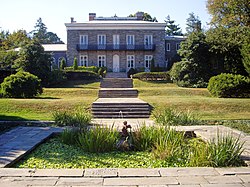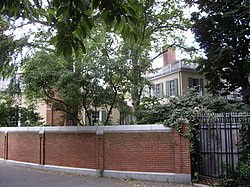History
In 1988, the City Parks department established a Historic House Office to preserve the 23 City-owned historic house-museums located in City parks. This office gave way to the Historic House Trust of New York City in 1989, funded by private donations, [9] as well as grants, [10] with the goal of each house becoming a professionally accredited museum. [11] In an effort to increase awareness of the program during its first year of operation, the Trust developed a so-called passport program wherein visitors would receive stamps each time they visited one of the houses. If a visitor went to all 23 properties, they would receive an audience with the Mayor. [12] HHT's passport program was brought back in 2008 as a method of commemorating the Trust's 20th anniversary. [13]
The Trust also holds events such as the Historic Houses Festival, during which all the houses are open with different events at each, in order to raise awareness. [9] New properties are added to the Trust when they come under city control if private care-taking or ownership has not succeeded, [14] although the contents of the home may remain under private ownership. [15]
This page is based on this
Wikipedia article Text is available under the
CC BY-SA 4.0 license; additional terms may apply.
Images, videos and audio are available under their respective licenses.





















